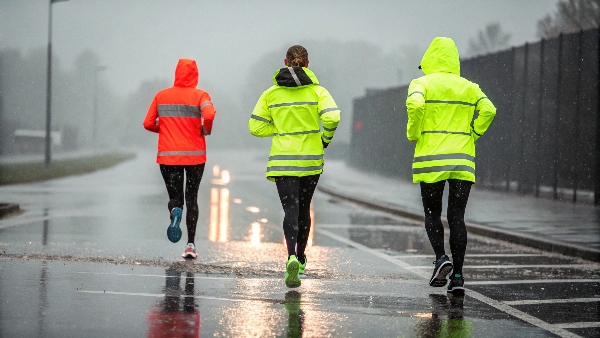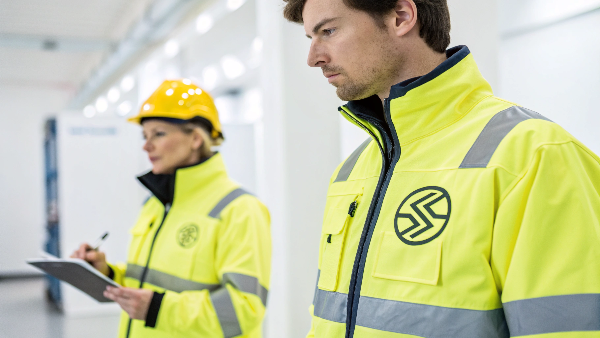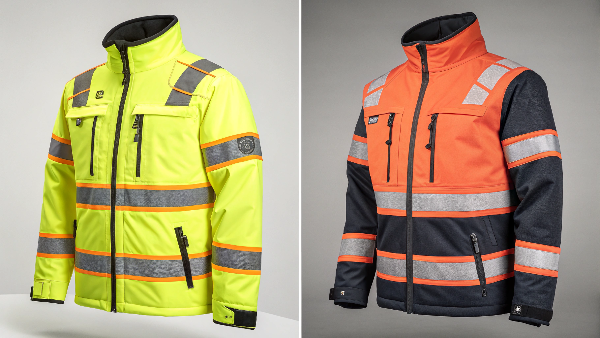Truck drivers often work in risky conditions near moving traffic. Not being seen, especially in bad weather or low light, can lead to terrible accidents. High-visibility safety clothing helps prevent this danger.
Truck drivers wear safety clothing primarily for visibility. This is crucial when they are outside their trucks, like during inspections or breakdowns. Regulations often mandate high-visibility gear in work zones or near traffic to keep them safe.
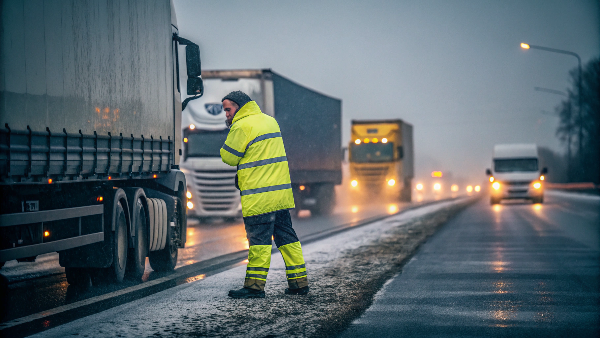
So, visibility is the main reason. But are specific items like vests always required? And what about other gear drivers sometimes use, like gloves or special glasses? Let's explore the specific rules and the practical reasons behind this gear.
Are truck drivers required to wear a safety vest?
Unsure if truck drivers always need a safety vest? Guessing wrong could mean trouble with rules or safety. Knowing the specific requirements keeps everyone safe and compliant on the job.
Yes, in many situations. For example, US federal rules require high-visibility vests1 (like ANSI Class 2 or 3) when drivers work on the right-of-way of federal-aid highways. Always check local rules too.
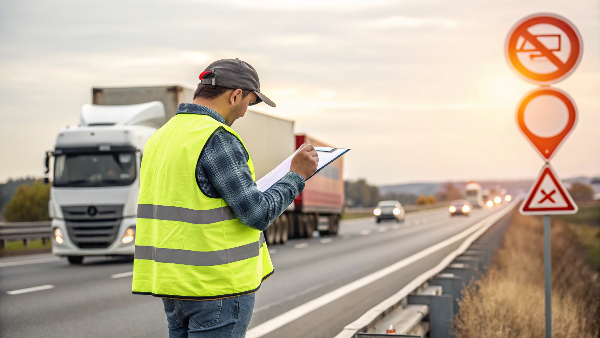
The main rule people talk about in the US is from the Federal Highway Administration (FHWA). It's called 23 CFR Part 6342. This rule says workers who might be near traffic or construction machines on a federal-aid highway's right-of-way must wear high-visibility safety clothes. Truck drivers definitely fit this description when they get out of their cabs. This happens during tasks like inspections, checking their load, or dealing with breakdowns near moving traffic.
The clothing itself has to meet certain standards. The most common one is ANSI/ISEA 1073. This standard has different classes based on how visible the clothing makes you:
- Class 1: For low-risk areas, far from traffic. This usually isn't enough for truckers working near highways.
- Class 2: For jobs near roads where speeds are under 50 mph. This is often the minimum required for truck drivers. It needs a certain amount of bright background fabric and reflective tape.
- Class 3: For high-risk areas. This includes high-speed roads, complex backgrounds that make it hard to see workers, or bad weather conditions. This class provides the most visibility with the largest amounts of required safety materials.
Many trucking companies also have their own safety rules. These company rules might demand vests even when federal law doesn't strictly require it, like inside busy truck yards or distribution centers. It’s always smarter to wear the vest if there's any risk. The main goal is simple: make sure the driver can be easily seen, especially when they are outside the truck and most vulnerable.
Why do truck drivers wear vests?
Ever wonder why vests are the main safety item for visibility? It seems like a simple piece of clothing. Understanding the reasons helps appreciate how important they are for saving lives.
Truck drivers wear vests mainly for high visibility. Bright fluorescent colors make them seen in daylight. Reflective stripes make them stand out at night or in bad weather. They meet safety requirements designed to prevent accidents.
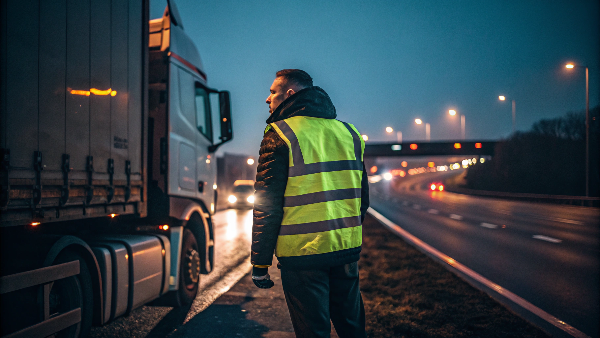
A safety vest works so well because of two key things: its background material and its retroreflective material. The background material is usually a very bright, fluorescent color, like lime green or safety orange. These colors look extra bright during the day. They react strongly to the sun's UV light, making them stand out more than normal colors. This contrast helps other drivers easily spot the trucker against different backgrounds, like roadsides or work zones.
For nighttime, dawn, dusk, or bad weather, the retroreflective tape is vital. This tape doesn't make its own light. Instead, it bounces light back towards where it came from, like a car's headlights. When headlights hit the vest, the tape shines brightly back at the car driver. This makes the trucker visible from far away, giving drivers time to react.
Standards like ANSI/ISEA 107 tell us exactly how much fluorescent background material and reflective tape are needed for each safety class (like Class 2 or Class 3). Higher classes need more material, which means better visibility. As manufacturers, we at Vissafety focus on using quality materials that meet these rules. We make sure the colors stay bright and the tape keeps reflecting even after use. Vests are also practical. They are usually lightweight and easy to wear over regular clothes or jackets.
Who is required to wear a safety vest?
Truckers often need vests, but who else wears them? It is easy to be unsure about all the rules. Understanding who needs this gear helps make sure everyone stays safe.
Many workers need safety vests4. This includes anyone working near traffic or moving vehicles or equipment. Think road construction crews, emergency responders, surveyors, parking attendants, and truck drivers outside their cabs.
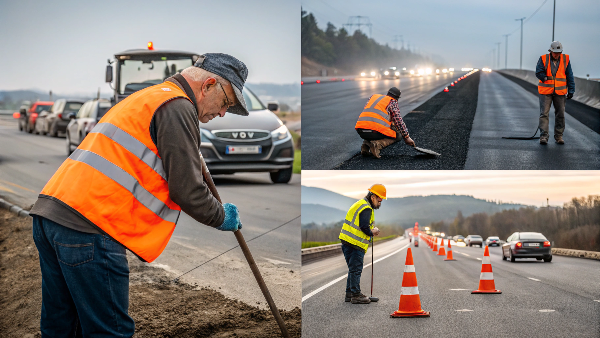
The need for safety vests, especially high-visibility ones meeting standards like ANSI/ISEA 107, applies to many jobs. The basic idea is to protect anyone who could be hit by moving vehicles or equipment. This is extra important in low light or busy areas. Here’s a look at some common groups who often need this gear:
| Worker Group | Why They Need Hi-Vis Gear | Common Standard Required |
|---|---|---|
| Road Construction Crews | Work right next to traffic and heavy machines. | ANSI Class 2 or 3 |
| Utility Workers | Often work on roadsides in changing light conditions. | ANSI Class 2 or 3 |
| Emergency Responders | Police, fire, EMS at accident scenes. Often chaotic and dark. | ANSI Class 2, 3, or P |
| Truck Drivers (outside) | On highway shoulders, loading docks, busy yards. | ANSI Class 2 or 3 |
| Tow Truck Operators | Work very close to moving traffic, often in emergencies. | ANSI Class 2 or 3 |
| Parking Attendants | Guide moving vehicles in lots or garages. | ANSI Class 1 or 2 |
| Airport Ground Crews | Work around planes and service vehicles on the tarmac. | ANSI Class 2 or 3 |
| Warehouse/Yard Workers | Work near forklifts and trucks inside a facility. | Often Class 2 |
Federal rules like the FHWA one cover public highways. But OSHA (Occupational Safety and Health Administration) also has rules about visibility when workers face risks of being struck by objects or vehicles. Plus, many companies create their own safety policies. These policies often require high-visibility gear5 for anyone working in areas with vehicle traffic, even if the law doesn't specifically say so for that exact spot. It really comes down to risk. If there's a chance a worker might not be seen easily, high-visibility clothing is a must-have safety measure.
Why do truck drivers wear gloves while driving?
Have you seen truckers wearing gloves even inside the cab? It might seem unnecessary when they are just driving. But ignoring the reasons misses the practical benefits gloves offer.
Truck drivers wear gloves for better steering wheel grip6, reduced hand fatigue7 from vibration and long hours, and sometimes for warmth or to absorb sweat. They also protect hands during quick inspections.
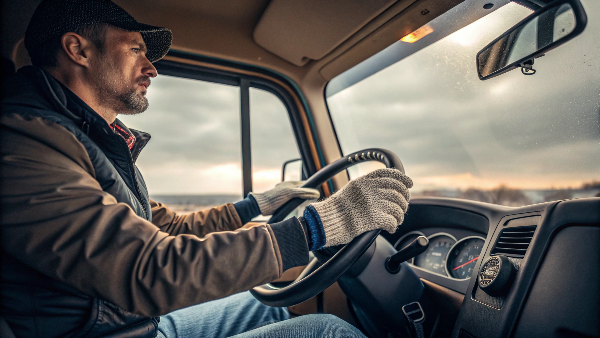
While high-visibility vests help drivers be seen outside the truck, gloves serve different needs. These needs are mostly about comfort, control, and some protection while driving and doing related tasks. Let's look at why a driver might choose to wear gloves:
- Better Grip: Steering wheels can get slippery. This happens on long drives or in hot weather when hands sweat. Gloves, often made of leather or special synthetics with grippy palms, give a firmer hold on the wheel. This means better control over the vehicle.
- Less Fatigue: Holding a steering wheel for many hours can make hands and wrists tired. The constant vibration from the road adds to this. Some driving gloves have light padding. Others are designed to soak up some vibration. This can make long trips more comfortable.
- Comfort and Skin Protection: Gloves can help keep hands warm if the truck cab is cold. In hot weather, they can absorb sweat. They also help prevent blisters or hard skin (calluses) that can form from rubbing against the wheel constantly.
- Protection for Quick Tasks: Drivers often do quick checks outside the cab, like inspecting tires, fueling up, or checking connections. While heavy work gloves are needed for real maintenance, driving gloves can offer a little protection for these quick tasks. They also help keep hands cleaner.
It is important to know that driving gloves are usually thinner and more flexible than the heavy-duty work gloves we might make at Vissafety for handling rough materials. For driving gloves, the main goal is feeling the wheel well (dexterity) and having a good grip.
Why do truckers wear yellow glasses?
Ever seen truckers wearing glasses with yellow lenses? It can look a bit strange, especially if it's not sunny. But there is often a specific visual reason behind this choice.
Some truckers wear yellow-tinted glasses because they filter blue light. This can increase contrast and make things appear sharper, especially in fog, haze, or at dawn or dusk. Some drivers feel it reduces glare.
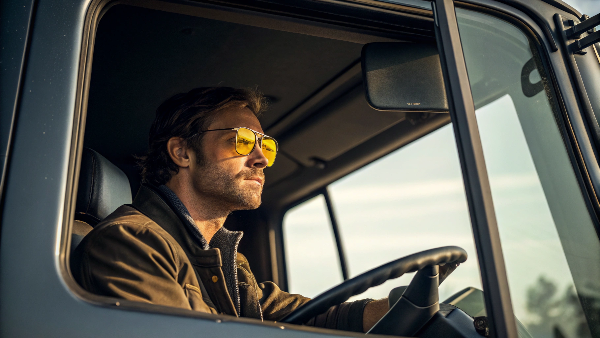
Yellow-tinted lenses are sometimes called "shooter's glasses" or "blue blockers." They work by filtering out the blue part of the light we see. Blue light scatters easily in the air – that's why the sky looks blue. But this scattering can also create haze and make it harder to see clearly in some conditions.
By filtering out blue light, yellow lenses might help drivers in a few ways:
- Increase Contrast: They can make objects stand out more clearly against their background. People often notice this most in conditions like fog, haze, overcast weather, or during twilight hours (dawn and dusk).
- Improve Depth Perception: Some drivers report that yellow lenses help them judge distances better.
- Reduce Glare (Subjectively): Yellow lenses are not polarized like sunglasses meant to cut glare. However, by filtering blue light, some drivers feel that bright lights from oncoming headlights or reflections off wet roads seem less harsh.
The main benefit seems to be during daytime low-light situations. Using them at night is sometimes debated. While they might make contrasts seem sharper, they also cut down the total amount of light getting to the eye. This could actually make it harder to see in the dark. Official safety advice often warns against using any tinted lenses for night driving. In the end, it's usually a personal choice. A driver uses them if they feel it helps their vision and comfort in certain conditions, without making driving less safe. It's just another tool some drivers use to handle the tough job of seeing clearly on the road.
Why do driving gloves8 have holes?
Have you noticed those driving gloves with holes punched out over the knuckles? They look stylish, maybe a bit retro. Those holes actually serve a real purpose beyond appearance.
Driving gloves have holes primarily for ventilation9, keeping hands cooler and drier. The holes also add flexibility around the knuckles10, making it easier and more comfortable to grip the steering wheel tightly.
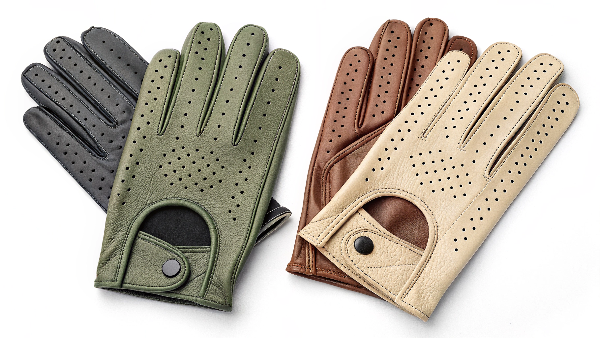
Those noticeable holes, often over the knuckles and sometimes on the back of the hand or fingers, are a common feature on many driving gloves. They have practical benefits for the driver:
- Ventilation: Driving for a long time, especially when it's warm, can make hands sweat. Sweaty palms mean less comfort and potentially a weaker grip on the wheel. The holes let air flow into the glove. This helps keep hands cooler and drier. Better comfort leads to better focus and control.
- Flexibility: When you grip a steering wheel, your knuckles bend. If the glove material (often leather) doesn't have any give, it can bunch up or feel tight across the knuckles. The holes allow the material around the knuckles to stretch and move more easily. This follows the hand's natural movement without feeling stiff. This small design feature improves comfort, especially on long drives.
- Style: We should also admit, it's a classic look. Many people link this design with traditional driving gloves, and it adds a certain style.
While these holes work well for driving gloves, where being able to move your fingers easily (dexterity) and comfort are very important, you usually won't find big holes like this on heavy work gloves. For work gloves, the main goal is protecting hands from cuts, scrapes, or impacts, so maximum coverage is usually better. It shows how gear is designed specifically for its intended job.
Conclusion
So, truck driver safety gear is not just chosen randomly. Vests provide critical visibility and meet safety rules. Other items like gloves and glasses help with comfort and control. It all works together to help keep drivers safe on the road.
-
Understanding the regulations for high-visibility vests can help ensure compliance and safety for truck drivers on the job. ↩
-
Learning about 23 CFR Part 634 will clarify federal safety requirements for truck drivers, ensuring they stay compliant and safe. ↩
-
Exploring ANSI/ISEA 107 will provide insights into safety clothing standards that protect workers, including truck drivers. ↩
-
Understanding the regulations around safety vests can help ensure compliance and enhance workplace safety. ↩
-
Exploring the importance of high-visibility gear can provide insights into safety measures that protect workers in hazardous environments. ↩
-
Understanding the importance of grip can enhance driving safety and comfort, making it essential for truck drivers. ↩
-
Exploring this can reveal how proper gear can improve driver endurance and overall performance on long hauls. ↩
-
Explore the advantages of driving gloves, including comfort, grip, and style, to enhance your driving experience. ↩
-
Learn how ventilation in driving gloves helps maintain comfort and performance while driving, especially in warm conditions. ↩
-
Discover why flexibility in driving gloves is crucial for a better grip and overall driving control, enhancing safety and comfort. ↩

